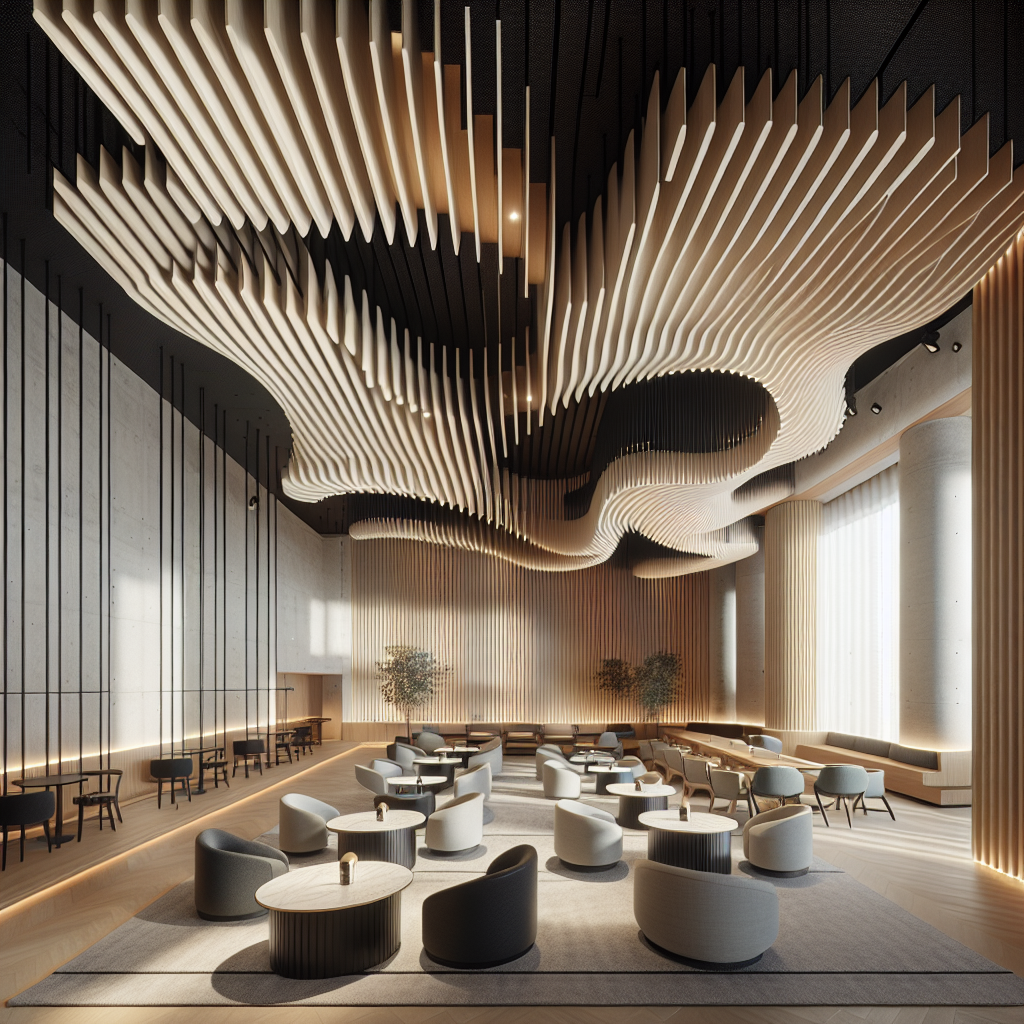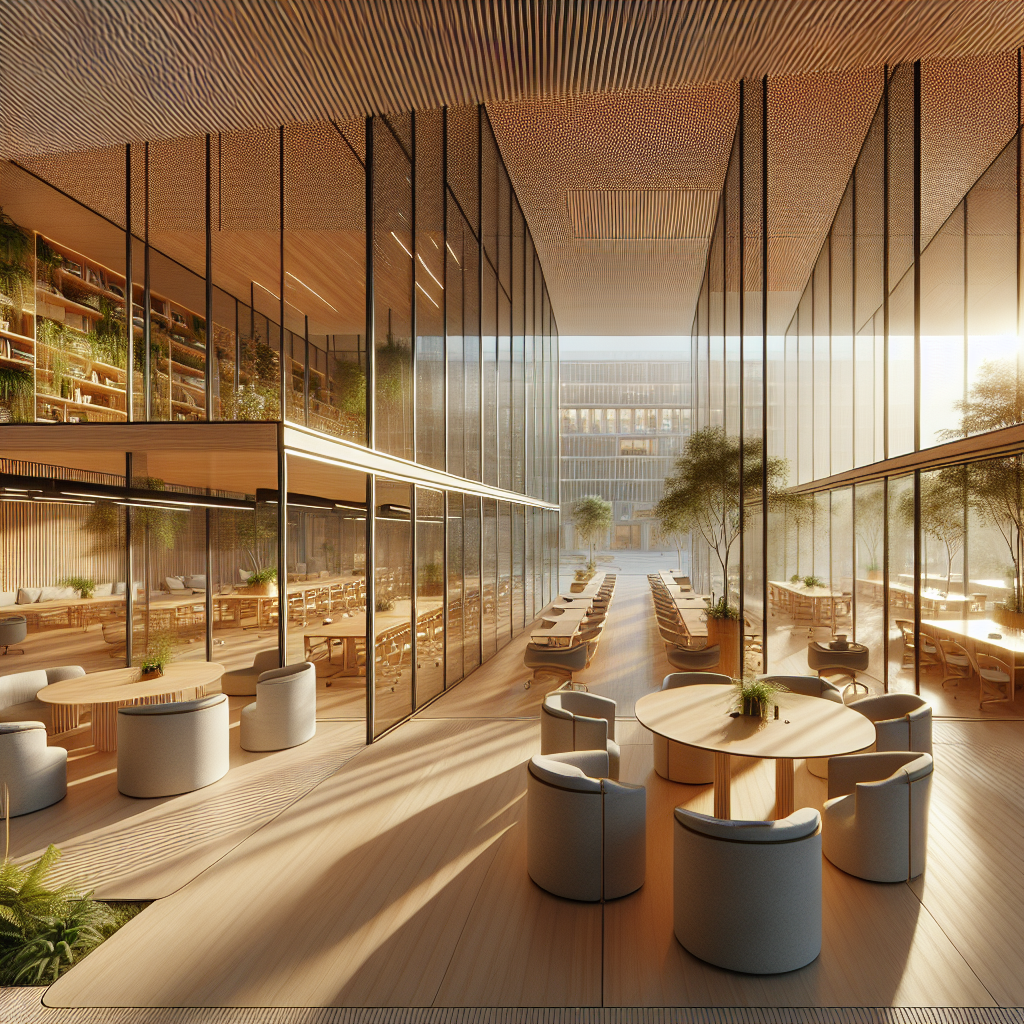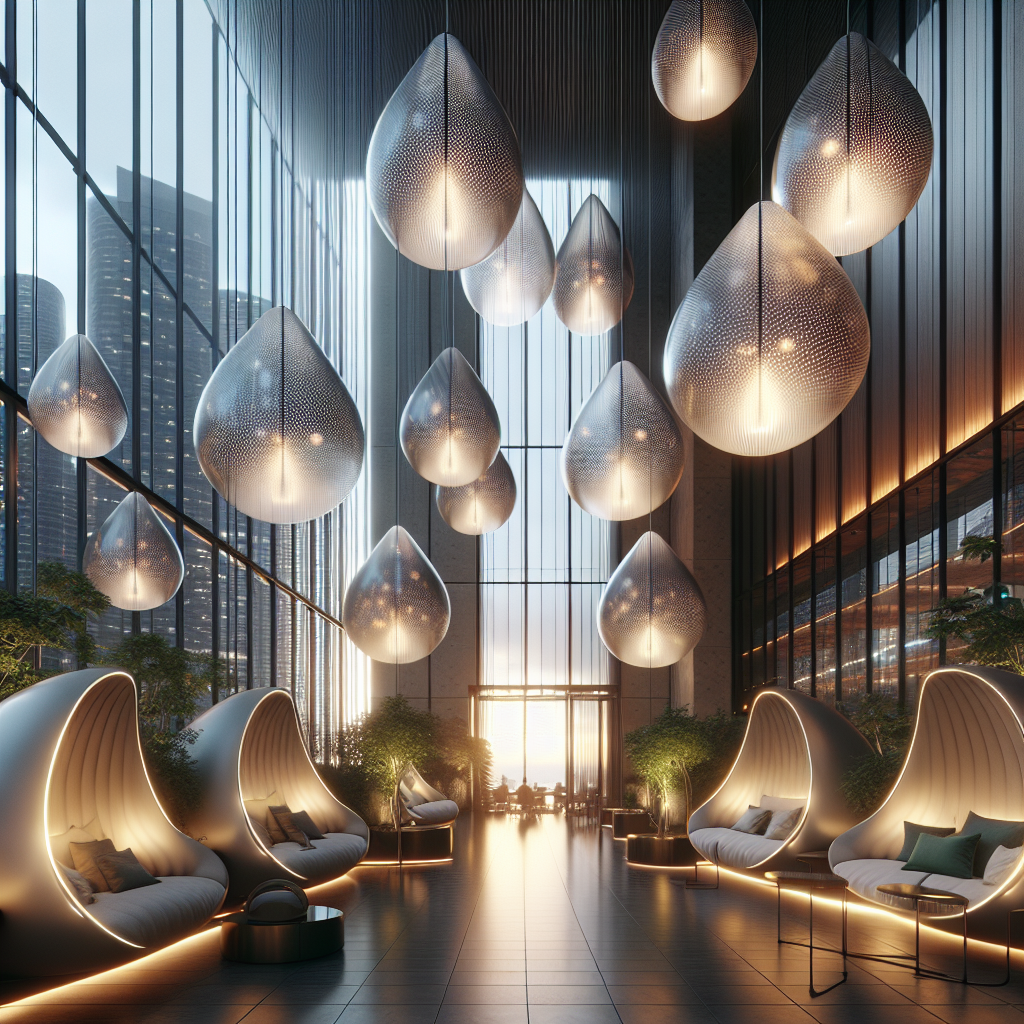Symphonic ceilings acoustic: baffles shaped like piano keys

Symphonic Ceilings Acoustic: Baffles Shaped Like Piano Keys
In the ever-evolving dialogue between architecture and sound, a new visual and acoustic language is emerging—one that fuses musical rhythm with spatial harmony. The “symphonic ceiling”—a design concept where acoustic baffles shaped like piano keys orchestrate both form and function—has become a poetic intersection of art, engineering, and sensory design. These installations are not mere aesthetic flourishes; they are finely tuned instruments, transforming ceilings into performative surfaces that balance acoustics, light, and emotion.
The Rise of Acoustic Aesthetics
Acoustic design has long been a silent partner in architecture. From the vaulted cathedrals of Europe to the minimalist concert halls of the 21st century, the manipulation of sound within space has shaped how we experience architecture. Yet, as open-plan offices, hospitality venues, and cultural institutions embrace transparency and hard surfaces, the demand for innovative acoustic solutions has intensified. According to a 2024 report by the Acoustical Society of America, sound absorption and spatial comfort rank among the top five design priorities for contemporary interiors.
Enter the symphonic ceiling: a composition of suspended panels, each resembling the alternating rhythm of piano keys. Crafted from sound-absorbing materials such as PET felt, micro-perforated wood, or recycled cellulose, these baffles not only mitigate reverberation but also create a striking visual cadence. Their linear geometry and tonal contrast—often in black and white or soft neutral gradients—evoke both musical notation and architectural order.
Designing Sound: Where Architecture Meets Music
The piano key motif is more than metaphor. It translates the structure of music into spatial rhythm. Each baffle acts as a note in a larger composition, defining the tempo of the ceiling plane. The alternating lengths and depths of the panels modulate sound diffusion, while the spacing between them orchestrates airflow and light penetration. This dual functionality—acoustic and aesthetic—embodies the modernist ideal of unity between form and purpose.
Architectural studios such as Snøhetta and Foster + Partners have experimented with similar acoustic geometries, integrating sound-responsive materials into their interiors. In the importance of acoustic comfort in interior design, such innovations redefine how we perceive space—not as static volume, but as a living resonance. The piano-key ceiling extends this philosophy, transforming the overhead plane into a performative surface that reacts to human presence.
Material Innovation and Sustainable Craft
The contemporary shift toward sustainable acoustic materials has catalyzed new design possibilities. Many symphonic ceilings employ recycled PET felt derived from post-consumer plastics, aligning with the growing movement toward circular economy design. These materials are lightweight, customizable, and available in a range of densities to fine-tune sound absorption across frequencies.
Some designers are pushing further, integrating biophilic principles—such as natural fibers, wood veneers, and organic dyes—into acoustic panels. This approach resonates with the ethos explored in biophilic design and its impact on human health and well-being, where tactile and visual warmth contribute to psychological well-being. The piano-key motif, when executed in natural materials, becomes a bridge between the mechanical precision of music and the organic rhythm of nature.
Case Study: The Concert Café, Vienna
One of the most compelling examples of this trend can be found in Vienna’s “Concert Café,” a hybrid cultural venue designed by local studio Klangform. The ceiling, composed of alternating white oak and black acoustic felt baffles, mimics the keys of a grand piano. Suspended in a wave-like pattern, the installation absorbs mid-range frequencies while diffusing high tones—creating a soundscape that encourages conversation without echo.
The designers collaborated with acoustic engineers to model the space using parametric software, ensuring that every “key” contributed to the overall sonic balance. The result is a ceiling that feels alive—its visual rhythm shifting with perspective, its acoustic performance adapting to occupancy. The installation embodies what the architects call “architectural polyphony”: multiple sensory layers working in harmony.
Beyond Function: The Poetics of Sound and Space
What makes symphonic ceilings so compelling is their ability to evoke emotion. They transform the ceiling—a traditionally overlooked surface—into a narrative device. The piano key pattern carries cultural symbolism: discipline, creativity, and the universal language of music. In a corporate setting, it suggests rhythm and productivity; in a hospitality space, it conveys warmth and sophistication.
According to a 2023 study published in the Journal of the Acoustical Society of America, environments with balanced acoustic absorption improve cognitive performance by up to 15%. This data underscores how design elements like symphonic ceilings are not merely decorative—they are integral to human experience and productivity.
Integration with Lighting and Technology
The evolution of acoustic design increasingly intersects with lighting and digital control systems. Many piano-key-inspired ceilings now incorporate integrated LED strips between baffles, creating a soft rhythm of illumination that mirrors the musical motif. These lights can be programmed to shift in intensity or color temperature throughout the day, reinforcing circadian rhythms and enhancing spatial atmosphere.
In high-end hospitality and cultural projects, designers are experimenting with interactive acoustics—panels that respond to sound levels or movement. This approach aligns with the emerging field of AI in architecture, where adaptive systems fine-tune environmental conditions in real time. Imagine a restaurant ceiling that subtly adjusts its acoustic absorption as the evening crowd grows, maintaining an optimal sound balance without human intervention.
Global Trends and Future Directions
Across Europe and Asia, the piano-key ceiling is becoming a signature of refined acoustic design. In Tokyo’s boutique hotels, monochrome baffles evoke minimalist musical scores; in Milan’s co-working spaces, colored variations reinterpret the motif through a contemporary lens. The trend reflects a broader cultural shift toward multisensory architecture—spaces that engage sight, sound, and touch in equal measure.
As sustainability and sensory design converge, the symphonic ceiling represents a model for future interiors: expressive yet efficient, artistic yet measurable. It echoes the broader movement toward acoustic design as a discipline that bridges science and emotion. The ceiling becomes not just a surface, but a score—an architectural composition that plays silently, shaping how we feel within a space.
Crafting the Future of Acoustic Design
For architects and designers, the challenge lies in balancing visual rhythm with acoustic performance. The piano-key baffle system offers a modular language adaptable to diverse contexts—from minimalist galleries to grand auditoriums. Its success depends on precision: the interplay of spacing, material density, and lighting integration. Yet its beauty lies in its universality. Whether rendered in felt, timber, or metal, the pattern speaks to a shared human experience—the harmony between sound and structure.
As the architectural world continues to explore sound-responsive environments, the symphonic ceiling stands as a testament to design’s capacity to orchestrate emotion. It is both sculpture and science, a visual sonata suspended above us—reminding us that architecture, like music, is ultimately about resonance.
In a world increasingly dominated by visual noise, these ceilings invite us to listen—to the space, to the silence, and to the subtle symphony that unfolds when design and acoustics perform in perfect unison.








